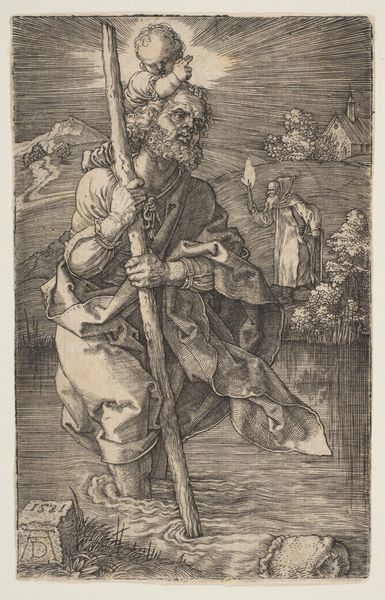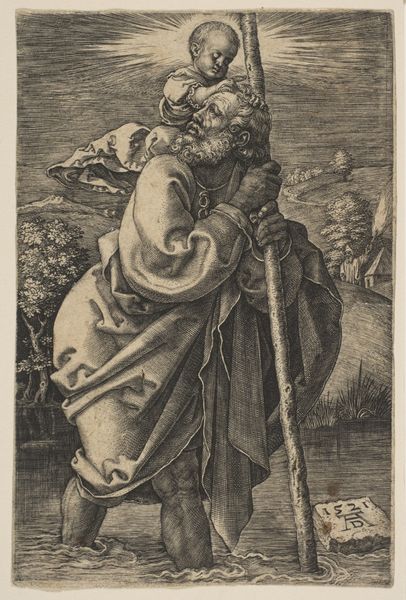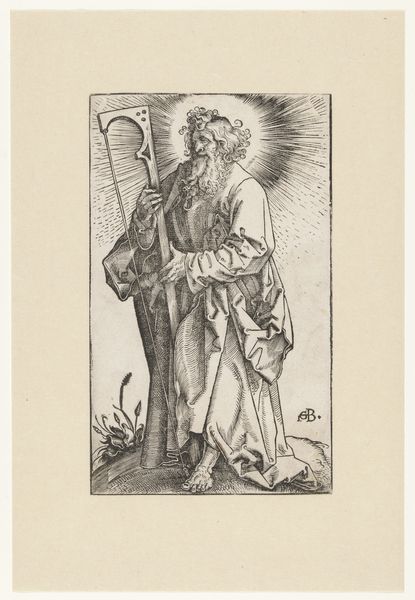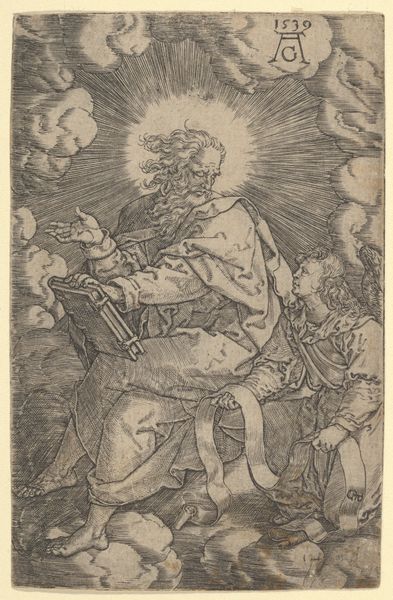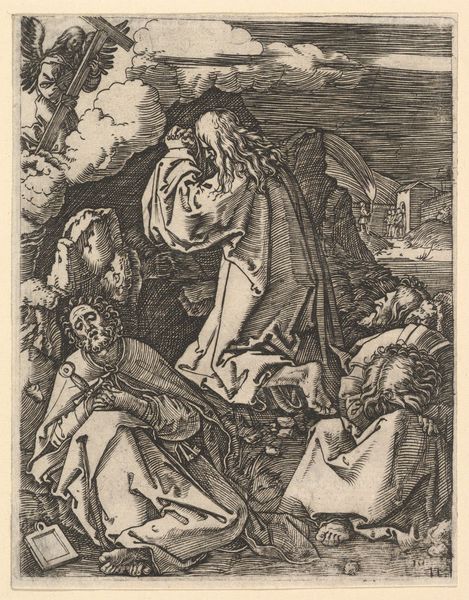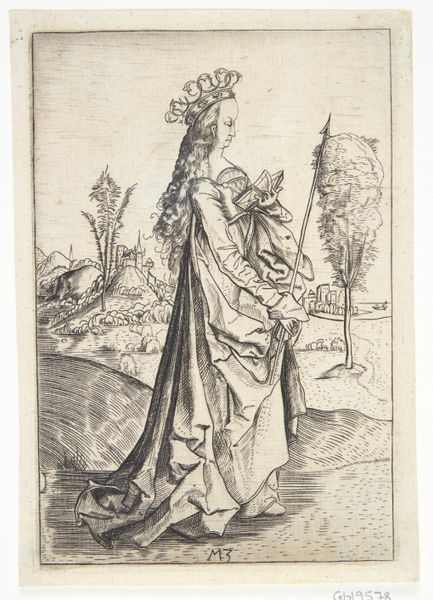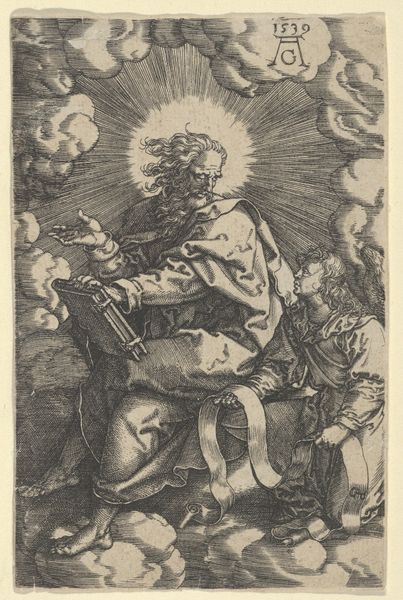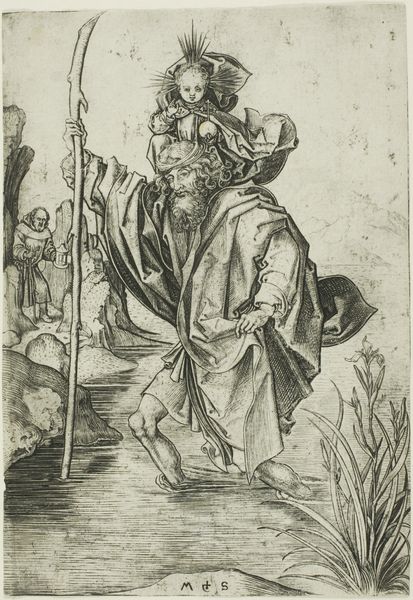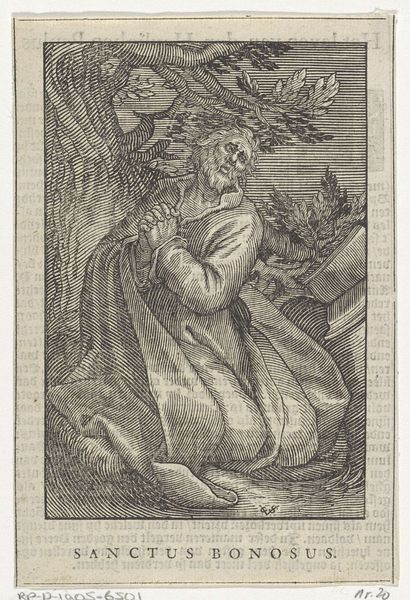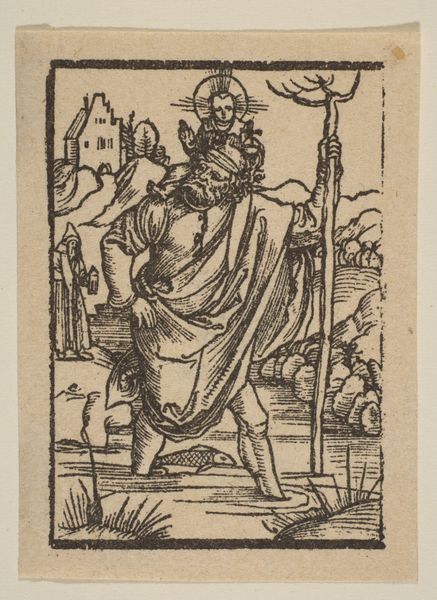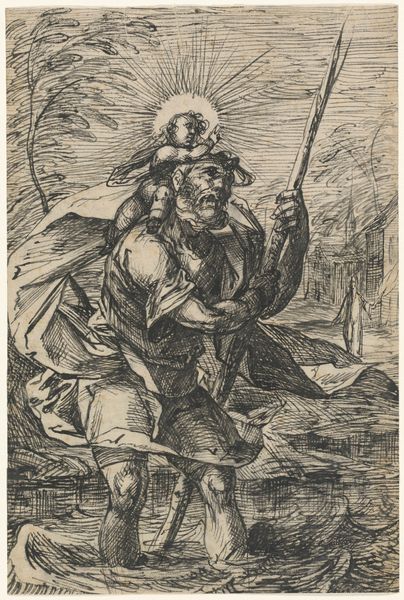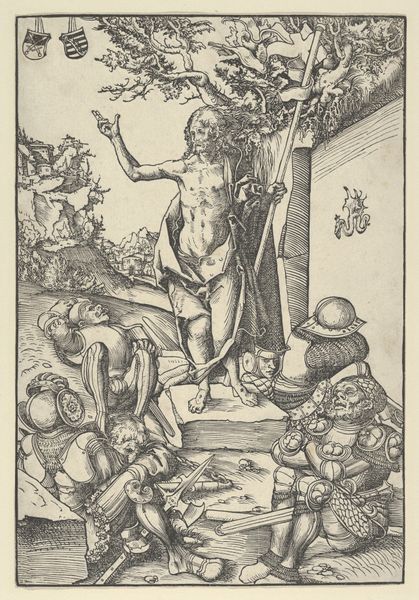
St. Christopher with the Head Turned to the Right 1521
0:00
0:00
Dimensions: 4 5/8 x 2 15/16 in. (11.75 x 7.46 cm) (image)
Copyright: Public Domain
Curator: This engraving, dating from 1521, is Albrecht Dürer's "St. Christopher with the Head Turned to the Right." The work is currently held in the collection of the Minneapolis Institute of Art. Editor: Immediately, what strikes me is the tension between the foreground and the background. St. Christopher fills the frame, his form bulky, yet in the distance we see such detailed miniature landscape. It creates an interesting visual paradox. Curator: The figure of St. Christopher, a saint often associated with travel and protection, carrying the Christ Child on his shoulders across a river, is potent. Notice the hermit with the lamp, a guide through the darkness, a symbol of enlightenment, beckoning Christopher. This tale underscores faith and divine burden. Editor: The technique is truly masterful. The textures Dürer achieves with just lines are astonishing. Look at the water's surface; it has such a sense of rippling depth. And then the contrasting smoothness of the Christ Child. How does he manage this with simple engraving? Curator: Think about the symbolism within the Renaissance context. St. Christopher represented hope during uncertain times. Dürer, grappling with his own mortality and the societal anxieties of the era, utilizes this figure to embody the fortitude required to carry burdens, both physical and spiritual. The Christ Child shedding light illuminates more than literal darkness here. Editor: The placement of the "AD" monogram, so discretely worked into a boulder at the river's edge, is a characteristic touch. And yet, its prominence reminds the viewer this isn't just religious iconography but also a bold assertion of the artist's skill and intellectual command of form. Curator: Indeed, and considering Dürer's fascination with the natural world, there is something compelling about observing it reduced into the medium of a printed engraving. Editor: Ultimately, for me, it’s the enduring demonstration of technical control and formal tension that sustains my attention to this engraving centuries later. The play between dark and light remains perennially captivating.
Comments
No comments
Be the first to comment and join the conversation on the ultimate creative platform.
